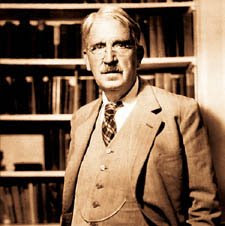Context of Article
Alan Sears is a professor of Social Studies Education and a member of the Citizenship Education Research and Development Group at the University of New Brunswick. He has been a social studies teacher for more than 30 years, working at all levels from primary to graduate school. His research and writing have been in the fields of social studies and citizenship education. He is the Chief Regional Editor for Canada for the journal Citizenship Teaching and Learning. He is currently principal investigator on an SSHRC project designed to map how young people in Alberta and the Maritimes conceptualize democratic participation. He regularly conducts workshops with teachers on social studies and citizenship education.
This particular article was published in 1996. Over the last decade, there have been changes to provincial curriculum implemented in Ontario, as well as several other provincial jurisdictions across Canada.
Introduction
Citing numerous differences between Canada and the United States, in terms of challenges in citizenship education, Sears argues the importance of developing a body of theory and research in citizenship education that recognizes unique features of Canadian citizenship. In this article, Sears aims to summarize the findings of recent research in citizenship education in English Canada. In doing so, Sears’ goal is to assess the current knowledge base and offer suggestions for further research.
What culture? What heritage? The Benchmark
Sears begins with a summary of the findings of the watershed study of Canadian social studies, authored by A.B. Hodgetts in 1968. Sears notes that the study concluded that much of the standardized Canadian history taught at the time in schools was outdated, basically useless, bereft off connections to the present, and excluded conflicting material. He also found that drastically differing forms of civics education were offered to English and French students. Sears calls for a similar comprehensive study to be carried out now and in the absence of such a current study, he frames his review of the relevant literature.
Grassroots Citizenship
Sears notes that Masemann (1989) found that citizenship education is a major goal of public education in general and the social studies curriculum in particular in all jurisdictions across the country. She also found that the focus has shifted over the past 20 years away from the mechanics of government to more emphasis on multiculturalism, bilingualism, regional accommodation, human rights and global awareness. Sears & Hughes (1994) found these trends to be continuing. Werner et al (1977) attempted to uncover the hidden curriculum with regard to the treatment of ethnic groups in social studies and concluded that in most programmes, the underlying value system was that of the dominant white and middle-class culture. Other research indicated that multicultural programmes in schools are most often the “celebratory” type, focusing on food, dress, and music. Gaskell, McLaren and Novogrodsky (1989) and Brookes (1990) call into question the gendered nature of the curriculum. Women’s experiences and knowldge have not been adequately represented and the authors call for reexamination of the entire curriculum. Sears and Hughes (1994) report data that indicates that some of these issues are being addressed at the policy level. Programmes have been developed and implemented with explicit rationales based on multi-culturalism. Tarrow (1990) found that Canada is further ahead in laying a foundation for programmes in human rights education than the US.
Behind Classroom Doors
Sears notes that very little is known about the practice of citizenship education in Canadian classrooms. Hodgetts (1968) found an abysmal state of practice in classrooms. Only 20% of classrooms he observed were rated as satisfactory. Osbourne (1994) and Sears and Hughes (1994) argue that the analysis of policy documents does not reveal the extent to which the programmes are guiding actual classroom practice. Sears and Parsons (1991) note that theory and curriculum development in the field for over 70 years has tended to emphasize an issues-centred, critical-thinking approach to citizenship education. Conley and Osbourne (1983) found that most high school courses in political science took “the civics approach” with an emphasis put on rote learning of political systems and debates about issues being avoided. Research indicates that many new teachers faced with the challenges of the classroom abandon the progressive methods they supported in university and took up very conservative and custodial ones. Teachers are often reluctant to deal with potentially controversial issues in class particularly when they are contemporary and local.
Several studies examined assessments of student knowledge about and attitudes towards human rights in Canada (Curtis, 1981; Kirkwood et al. 1987; Ungerleider, 1990). These researchers indicated that while their results are generally positive, there is still room for improvement in students’ knowledge and attitudes in this area and that a specific focus on rights in school is needed.
Social Studies is Central
Although social studies is viewed as shouldering the responsibility for citizenship education, Sears and Hughes (1994) report that there is growing recognition that other subject areas have responsibilities in the area of citizenship education as well. It is also recognized that citizenship education also takes place through the hidden curriculum of school life.
Conclusion
Sears concludes by calling for more and better quality research in the area of citizenship education. He notes that challenges in this task include Canada’s size, diverse population and provincial education system.
Subscribe to:
Post Comments (Atom)

No comments:
Post a Comment